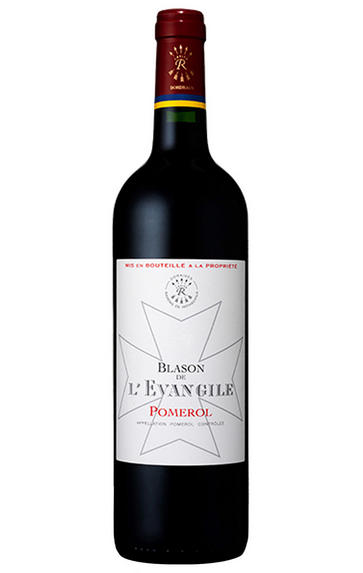
2021 Blason de L'Evangile, Pomerol, Bordeaux
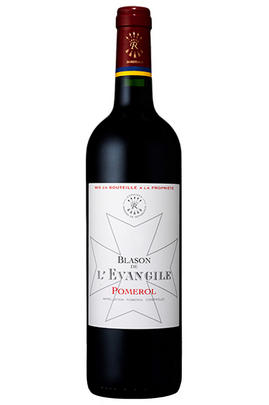
Critics reviews
The 2021 Blason de L'Évangile is marked by bold, racy fruit and terrific energy. Crushed red berry fruit and lively floral notes abound in a classy, refined Blason. All the elements are impeccably balanced. Pretty floral accents grace the lifted, perfumed finish. The 2021 is a gorgeous Blason.
Drink 2024 - 2033
Antonio Galloni, vinous.com (May 2022)
Jane Anson, janeanson.com (May 2023)
Jancis Robinson MW, jancisrobinson.com (May 2023)
The 2022 Blason de l'Evangile offers up aromas of dark berries, cherries and rose petals, followed by a medium to full-bodied, suave, supple and seamless palate. This charming, fruit-driven Pomerol will drink well young.
Wine Advocate (April 2023)
An elegant and mineral red with a medium body and tight, fine tannins. Stony, with fresh red-fruit and citrus notes. Tight center-palate. Fresh and fine. Second wine. 84% merlot and 16% cabernet franc.
James Suckling, jamessuckling.com (May 2022)
About this WINE
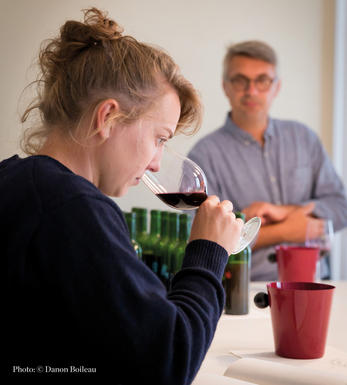
Chateau l'Evangile
Château L'Evangile is one of the prestigious estates in Pomerol and produces some of the most sought-after wines in the appellation. It is located in the far east of the Pomerol appellation and its vineyards border those of Château La Conseillante, Château Gazin and Château Cheval Blanc. Its 14.1 hectares of vineyards (Merlot 78%; Cabernet Franc 22%) lie on deep gravel beds pitted with sand and clay.
The wine is vinified traditionally, undergoing a lengthy cuvaison followed by maturation in oak barriques (40% new) for 16-20 months. L`Evangile has always been a top-class estate but quality has been pushed noticeably higher since Domaines Baron de Rothschild of Château Lafite acquired a majority shareholding in 1990.
With Michel Rolland as consultant winemaker, the wines of L'Evangile are now challenging Pétrus and Lafleur in terms of their sheer class and quality.
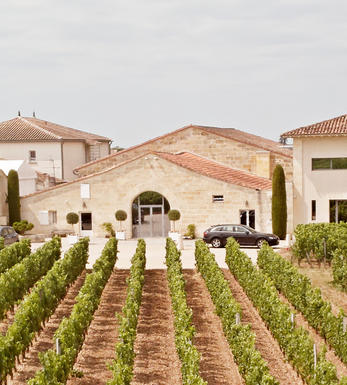
Pomerol
Pomerol is the smallest of Bordeaux's major appellations, with about 150 producers and approximately 740 hectares of vineyards. It is home to many bijou domaines, many of which produce little more than 1,000 cases per annum.
Both the topography and architecture of the region is unremarkable, but the style of the wines is most individual. The finest vineyards are planted on a seam of rich clay which extends across the gently-elevated plateau of Pomerol, which runs from the north-eastern boundary of St Emilion. On the sides of the plateau, the soil becomes sandier and the wines lighter.
There is one satellite region to the immediate north, Lalande-de-Pomerol whose wines are stylistically very similar, if sometimes lacking the finesse of its neighbour. There has never been a classification of Pomerol wines.
Recommended Châteaux : Ch. Pétrus, Vieux Ch. Certan, Le Pin, Ch. L’Eglise-Clinet, Ch. La Conseillante, Ch. L’Evangile, Ch. Lafleur, Trotanoy, Ch. Nenin, Ch. Beauregard, Ch. Feytit-Clinet, Le Gay.
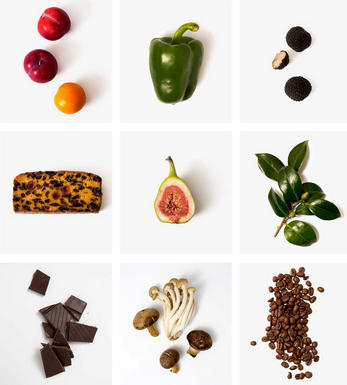
Merlot
The most widely planted grape in Bordeaux and a grape that has been on a relentless expansion drive throughout the world in the last decade. Merlot is adaptable to most soils and is relatively simple to cultivate. It is a vigorous naturally high yielding grape that requires savage pruning - over-cropped Merlot-based wines are dilute and bland. It is also vital to pick at optimum ripeness as Merlot can quickly lose its varietal characteristics if harvested overripe.
In St.Emilion and Pomerol it withstands the moist clay rich soils far better than Cabernet grapes, and at it best produces opulently rich, plummy clarets with succulent fruitcake-like nuances. Le Pin, Pétrus and Clinet are examples of hedonistically rich Merlot wines at their very best. It also plays a key supporting role in filling out the middle palate of the Cabernet-dominated wines of the Médoc and Graves.
Merlot is now grown in virtually all wine growing countries and is particularly successful in California, Chile and Northern Italy.


Buying options
Add to wishlist
Description
The 2021 Blason de L'Évangile is marked by bold, racy fruit and terrific energy. Crushed red berry fruit and lively floral notes abound in a classy, refined Blason. All the elements are impeccably balanced. Pretty floral accents grace the lifted, perfumed finish. The 2021 is a gorgeous Blason.
Drink 2024 - 2033
Antonio Galloni, vinous.com (May 2022)
wine at a glance
Delivery and quality guarantee